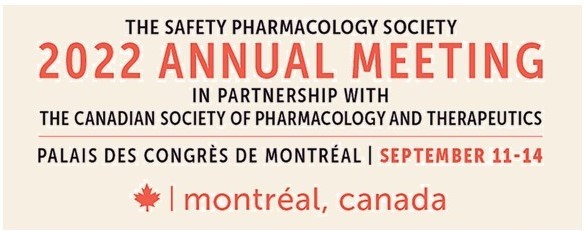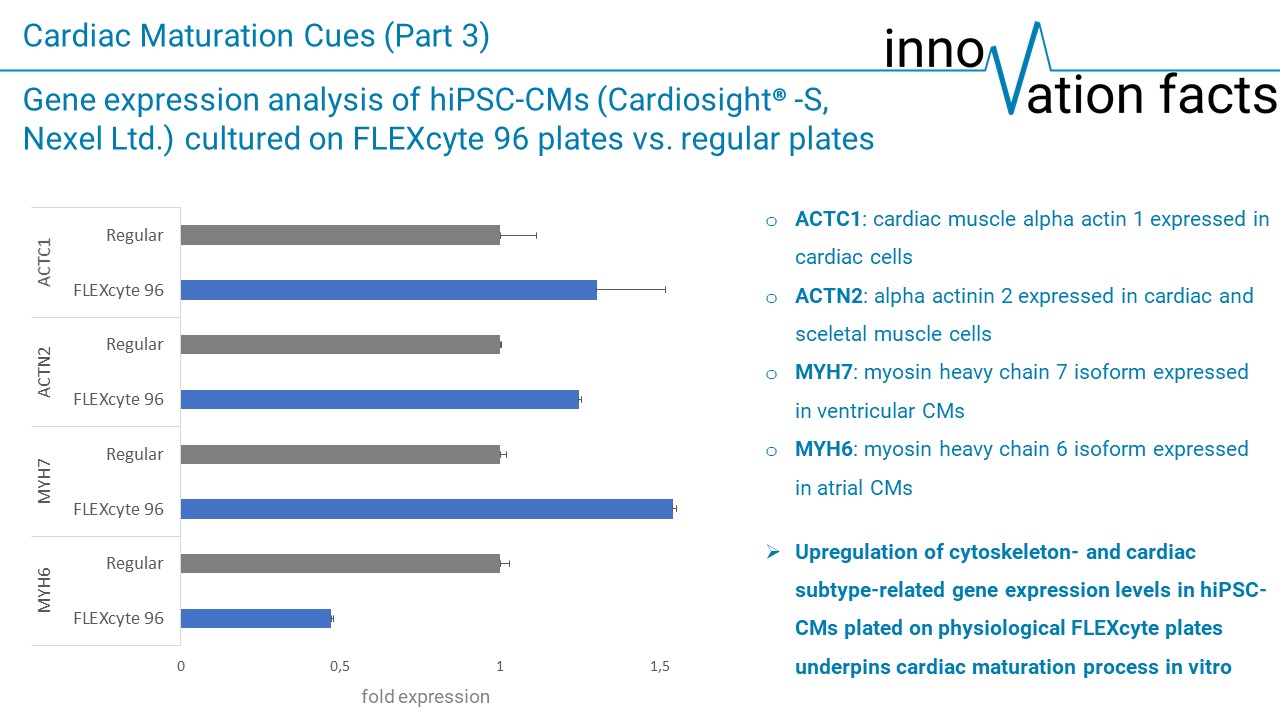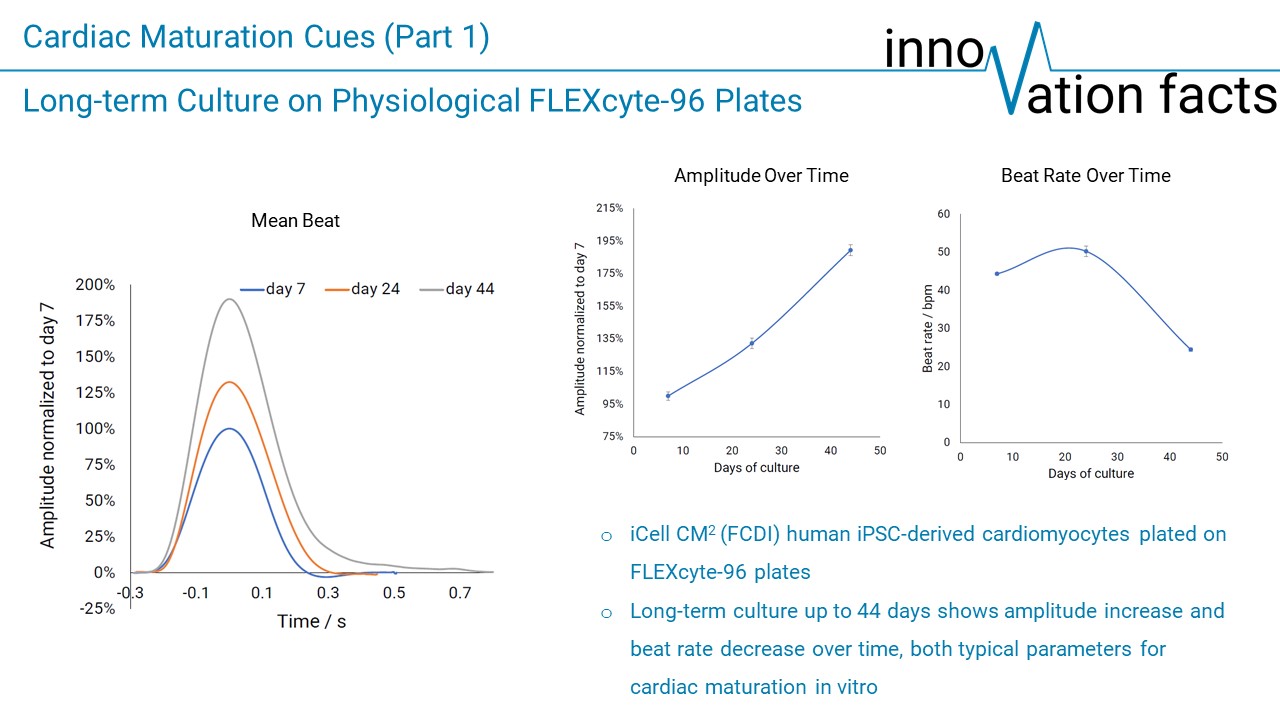Kategorie: News
-

Safety Pharmacology Society Annual Meeting, September 11 -14, 2022 in Montréal, Canada
Meet us at the innoVitro Booth 810 in Montréal, Canada at the Safety Pharmacology Society Annual Meeting in September 2022! Don’t miss our poster presentations entitelt (SP090) „Lot-to-lot consistency study of commercial human iPSC derived cardiomyocytes regarding contractile properties“ and (SP091) „Assessment of a Smooth Muscle Cell Maturation Protocol for the Analysis of Contractile Properties“.…
-

innoVation Facts – Cardiac Maturation Cues (Part 3)
The last part of our innoVation Facts series dealing with cardiac maturation cues focused on gene expression analysis of human iPSC-derived cardiomyocytes (hiPSC-CMs) cultured either on physiological FLEXcyte or regular cell culture plates. The data shows increased expression levels of ACTC1 and ACTN2 genes (both producing cytoskeleton-related proteins) as well as the MYH7 gene (important…
-

innoVation Facts – Cardiac Maturation Cues (Part 2)
In our second part of the innoVation Facts series addressing cardiac maturation cues, we focus on phenotypic changes that take place when human iPSC-cardiomyocytes (hiPSC-CMs) are cultured on FLEXcyte 96 plates to emulate the physiological conditions of the human heart. To visualize changes in actin filament development, staining with Phalloidin was performed on Cardiosight-s (Nexel…
-

innoVation Facts – Cardiac Maturation Cues (Part 1)
We are happy to announce our new innovation facts blog focussing on news about the FLEXcyte technology and related topics! We start the blog with a series about cardiac maturation cues, a hot topic for everyone working on human iPSC-derived cardiomyocytes. In this first part, we show you how to use the physiological environment of…
